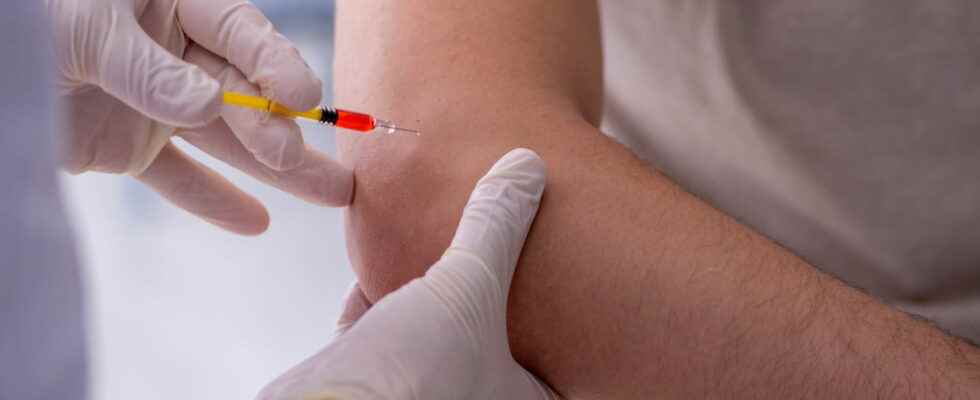This is the reference treatment for treating the symptoms caused by a breach in the dura mater, which can occur in particular following a lumbar puncture. It consists of injecting one’s own blood into the epidural space. When is it practiced? How does this gesture take place? Is it painful?
Definition: what is the blood-patch?
The blood patch is a medical technique performed by an anesthetist-resuscitator. It consists of inject autologous blood (i.e. coming from the patient himself) within the lumbar epidural space for seal a dural breach and treat the associated complications. “The volume of blood injected varies according to the patient, between 3 and 48 ml, most often, the injection is of the order of 20 ml“, specifies Dr. Marie-Paule Chariot. The results of this technique are satisfactory in more than 90% of cases.
What are the indications for the blood-patch?
It constitutes the reference treatment during complications of dural tear. According to the High Authority of Health, “this is the treatmente more effective in case of non-spontaneous healing of post-lumbar puncture syndrome within 48 to 72 hours“.”It thus allows to treat consecutive headaches to a puncture in the dura mater, but it can be hearing disorders or oculomotor paralysis (eye movements)“, says Dr. Chariot.
“First of all, it is imperative to disinfect the skin locally and at the level of the vein where the blood sample will be taken, explains Dr. Chariot. It takes a rigorous hygiene, in the operating room or in the obstetrical room, gloves, mask sterile outfit for the operators“. This gesture often requires the presence of two operators: one is in charge of taking the blood sample while the other performs the injection. The blood sample is taken from the bend of the elbow. “The injection is then scheduled at least 2 days after the onset of signs following the first bite, in the same epidural space as the first bite.says our expert. It is done very slowly, and should be stopped immediately as soon as the patient experiences pain or abnormal symptoms.“. As a precaution, the patient must then remain lying down for 2 hours. In case of immediate ineffectiveness or recurrence of symptoms, it is possible to proceed to a 2nd injection, or even a 3rd and last one. “But there is almost 100% success at the second injection“, assures Dr. Chariot. The blood-patch can also be done in a child.
Who does the blood patch?
It is a gesture that can only be carried out by a Anesthesiologist Resuscitator.
How long does the injection last?
“The injection lasts a few minutes. You must be installed lying on your side in a fetal position (PLS very curled up)“, specifies the anesthesiologist.
What are the risks of the blood patch?
Complications are rare. We will note :
- of the back pain and paresthesia during injection
- moderate bradycardia
- transient hyperthermia
- local pain at the injection site, tingling or even electric shocks in the legs: it is then necessary to stop immediately
Is it painful?
The injection can be a little painful. Of the back pain may persist for a few days. “Anesthesia of the skin is possible“, however, specifies Dr. Chariot.
Thank you to Dr. Marie-Paule Chariot, anesthetist-resuscitator and Vice President of the National Union of Anesthesiologists Resuscitators of France.
